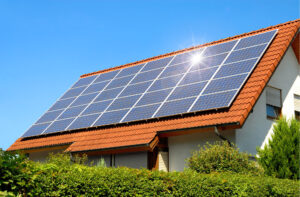Argentina boosts solar energy and joins the global energy transformation in search of a gr
November 2, 2025
The Argentine energy map is changing. More and more homes, cooperatives, and companies are betting on distributed generation, a system that allows renewable energy production —mainly solar— for self-consumption and injecting the surplus into the power grid.
Driven by Law 27.424, this model is growing across the country and is positioned as a key piece in the transition towards a cleaner and more sustainable energy system. Its expansion also raises new questions about investment, installation, and economic benefits.
Currently, Argentina has 3306 user-generators and an installed capacity exceeding 97,000 kW, according to the Secretariat of Energy. The 67% increase in less than a year demonstrates a structural change in the way electricity is produced and consumed.
This new paradigm combines efficiency, autonomy, and sustainability, consolidating a global trend towards energy decentralization.

What distributed generation is and how it works
The distributed generation (DG) allows electricity production near consumption points —homes, buildings, or industries— using clean sources like the sun or wind. Users can consume their own energy and feed the surplus into the grid, reducing costs and emissions.
The system is based on bidirectional meters that record the consumed and generated energy. This allows the surplus produced to be deducted from the total bill. To operate within the regime, provinces must adhere to the national law and authorize the formal connection.
The legal framework offers tax incentives, such as VAT and Income Tax exemptions for those who inject energy into the grid. Additionally, the regulation sets an ambitious goal: to reach 1,000 MW installed by 2030, a challenge that requires cooperation between the State, the private sector, and citizens.
The initial cost of a solar installation ranges between 2,000 and 2,500 dollars, depending on the scale of the project. Although it requires investment, the system can amortize in four to six years, depending on the region and energy consumption. Performance varies according to factors such as solar radiation, local electricity rates, and system design. Provinces with higher rates, like Córdoba, show faster growth in solar panel adoption.
Solar energy: origin, expansion, and global benefits
The solar energy emerged at the end of the 19th century when the photovoltaic effect was discovered. However, its commercial development gained momentum only in the 20th century, driven by technological advances and the need to reduce dependence on fossil fuels.
Currently, solar energy is the fastest-growing renewable source in the world. The International Energy Agency estimates that its global capacity will double before 2030, thanks to its low cost, accessibility, and contribution to decarbonization.
Its positive impact transcends the environmental. Solar energy democratizes access to electricity, boosts local economies, strengthens energy independence, and reduces energy loss in transmission, as it is produced directly at consumption points.
In countries like China, India, Germany, and Brazil, the installation of photovoltaic roofs and solar parks transformed power grids and reduced millions of tons of annual emissions.

Collective benefits and local sustainability
In Argentina, distributed generation also generates community benefits. When panels produce energy during peak demand hours —like summer noons—, they relieve the load on substations and improve grid stability.
The electric distributors also benefit, as they buy energy closer to the consumption point, reducing transmission losses that can reach up to 10%. This improves system efficiency and supply quality.
Additionally, distributed generation promotes clean energy and citizen participation, two pillars to face the climate crisis. Each solar installation represents a step towards a more equitable, resilient, and environmentally friendly energy matrix.
Sustained and federal growth
According to the Secretariat of Energy, 343 distributors and cooperatives currently participate in the distributed generation system. Córdoba leads with more than 32,000 kW installed, followed by Buenos Aires and San Juan.
The growth is explained by the drop in panel costs, the increase in rates, and a growing environmental awareness among consumers. In the industrial field, sectors such as food and agriculture incorporate solar systems to reduce costs and carbon footprint.
The Argentine energy future is moving towards a cleaner, decentralized, and sustainable matrix. With appropriate policies and social commitment, solar energy can become one of the most powerful tools to face climate change and ensure a fairer energy future for all.
Search
RECENT PRESS RELEASES
Related Post



